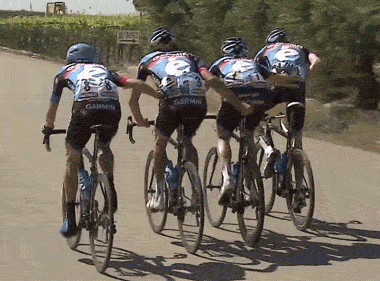 |
| Glacier National Park |
 |
| Via Flickr user BLMOregon |
Oregon
The 33-mile loop around Crater Lake is certainly a physically demanding ride, what with the long, steep elevation gains when you're already well above sea level, but it's absolutely worth it. As you follow Rim Drive around the lake, be sure to stop at the vistas to get a glimpse of the gorgeous crystal-blue waters that fill that crater.
Acadia National Park
Maine
At Acadia National Park, you can explore both the beautiful New England coast, as well as the lush forests and granite slopes this incredible park has to offer. With 45 miles of historic carriage roads and plenty of paved roads, there's no shortage of good cycling.
Shenandoah National Park
Virginia
If you're looking for a lengthy, hilly challenge, then Shenandoah is the park for you. The 105-mile Skyline Drive following the crest of the Blue Ridge Mountains is a demanding route and is best reserved for more experienced cyclists. But do be careful: Skyline Drive is a two-way road with a lot of curves and blind spots, so just be aware of your surroundings and the cars passing you.
Grand Canyon National Park
Arizona
Bikes may not be allowed in the canyon, but there are still plenty of options for bicyclists at this beautiful, iconic national park. Besides, the view from the top is simply outstanding. Both the North and South Rims have options for cyclists, including the 2.8-mile Hermit Road Greenway Trail on the South Rim.
 |
| Via Flickr user Andreas Johansson |
California
It may be the hottest, driest and lowest national park the U.S. has to offer, but Death Valley National Park has 785 miles of road and trail available to cyclists—you just might want to avoid the hottest of the summer months, when temperatures can rise to 120 degrees during the day and drop to zero at night.
Glacier National Park
Montana
Take your two-wheeled transport on a ride through the heart of Glacier National Park and around the mountainsides on the 55-mile Going-to-the-Sun Road. The scenery is gorgeous and you'll get a chance to view Jackson Glacier Overlook as well as local wildlife, like bighorn sheep and mountain goats. But it is a tough ride, so be prepared for some climbs.
Grand Teton National Park
Wyoming
There are plenty of awesome things to do at Grand Teton National Park, and biking is definitely one of them. With a multi-use pathway to ride along and see the park's sights, as well as several roads, there's plenty of great pedaling.
Redwood National Park
California
The paths and trails in Redwood National Park ride among the gorgeous redwoods of this Northern California forest, which tower 350 feet above the ground, and even offer incredible ocean views at certain points. With several different loops and trails to ride, you can easily spend an entire day (or a couple of days) exploring the area.
Are we missing your favorite? Let us know in the comments section.






















